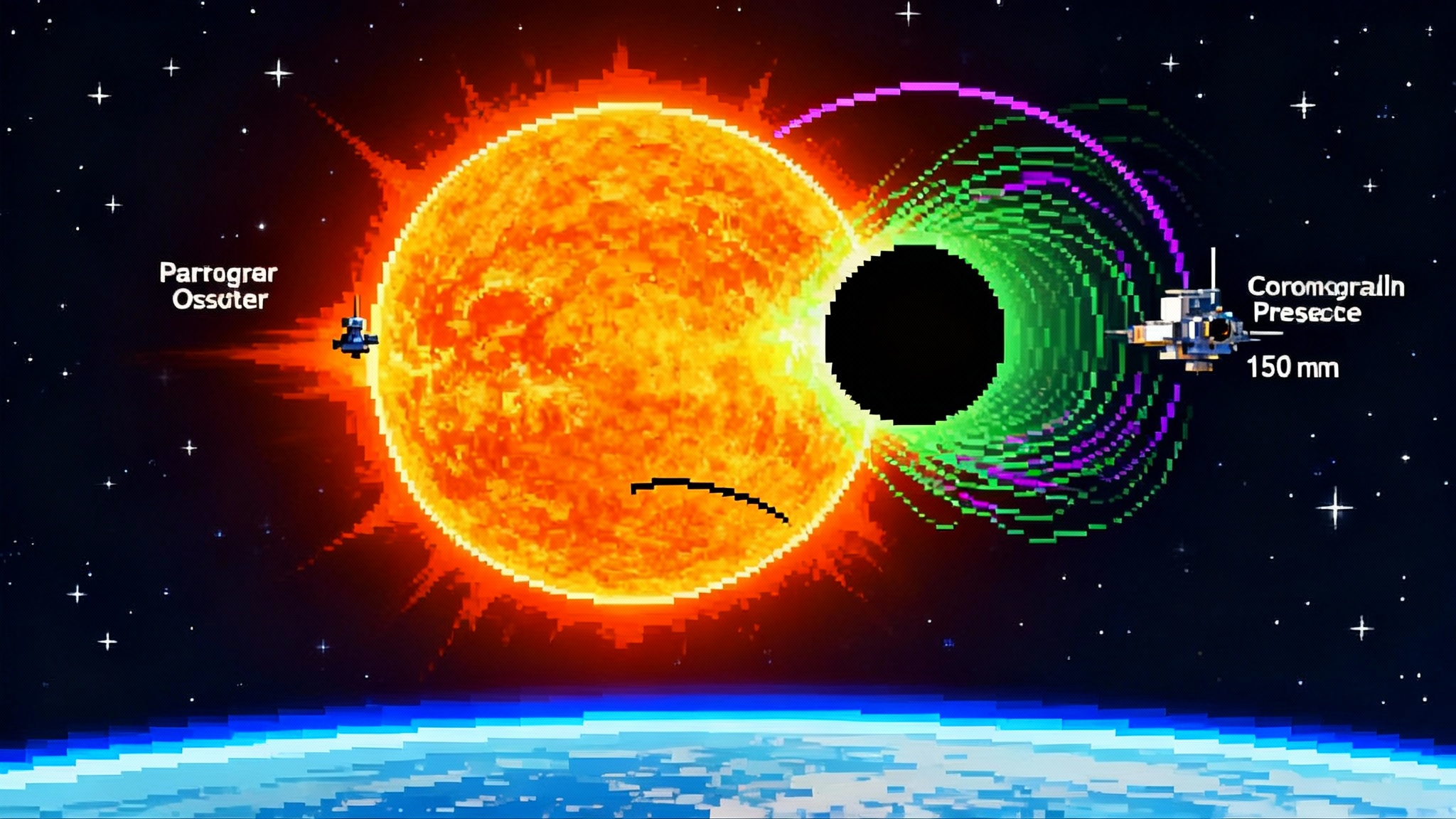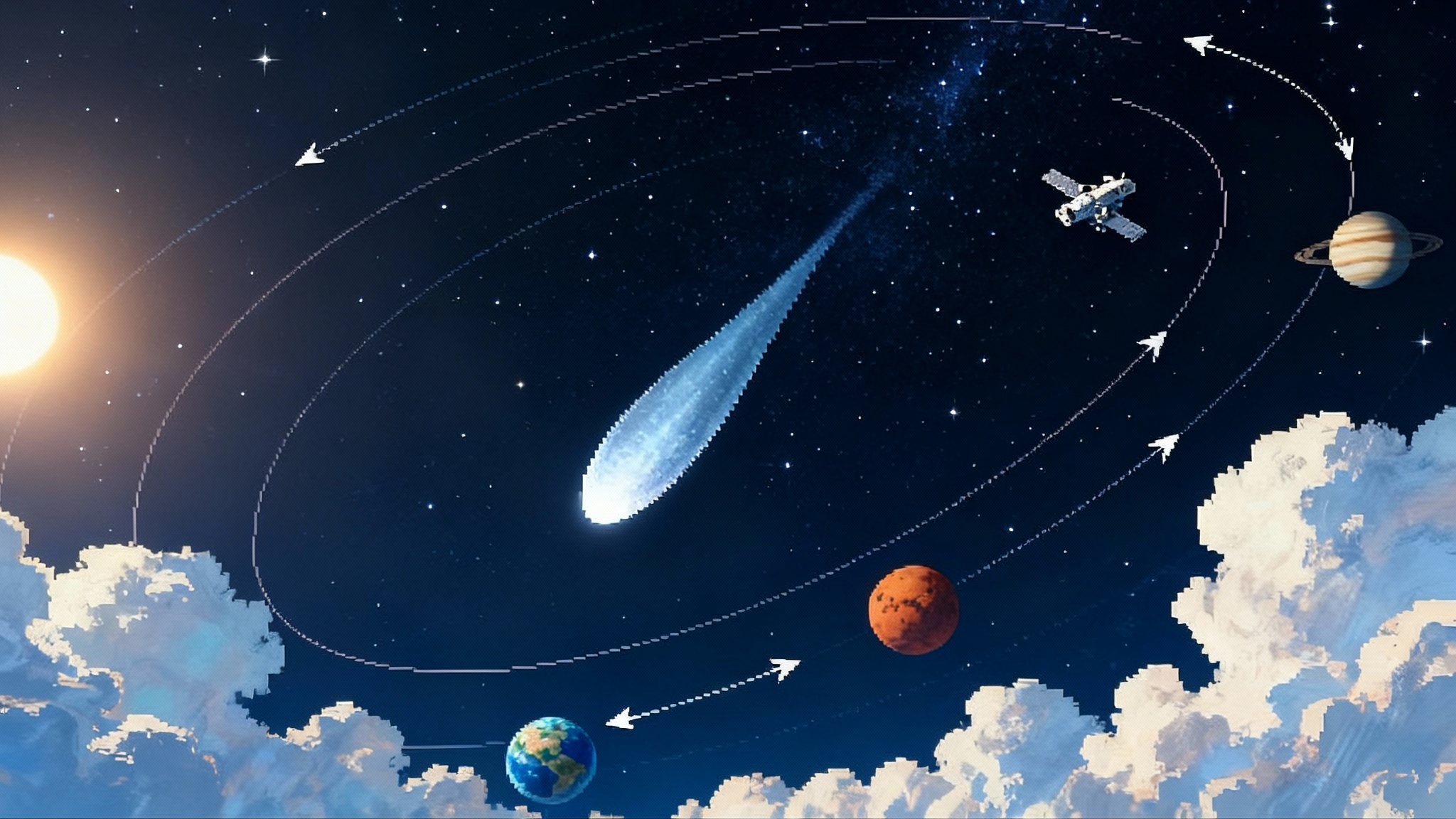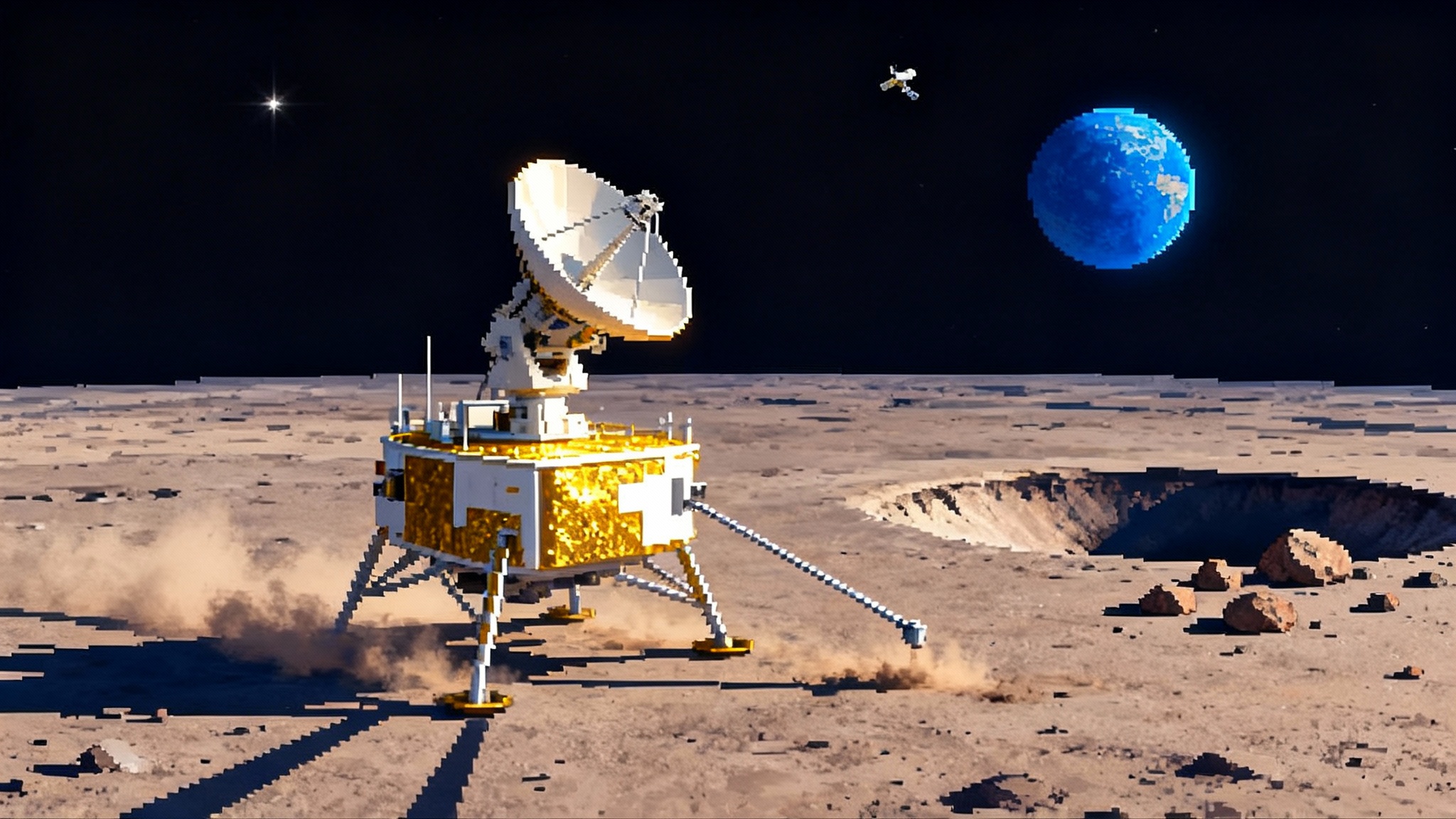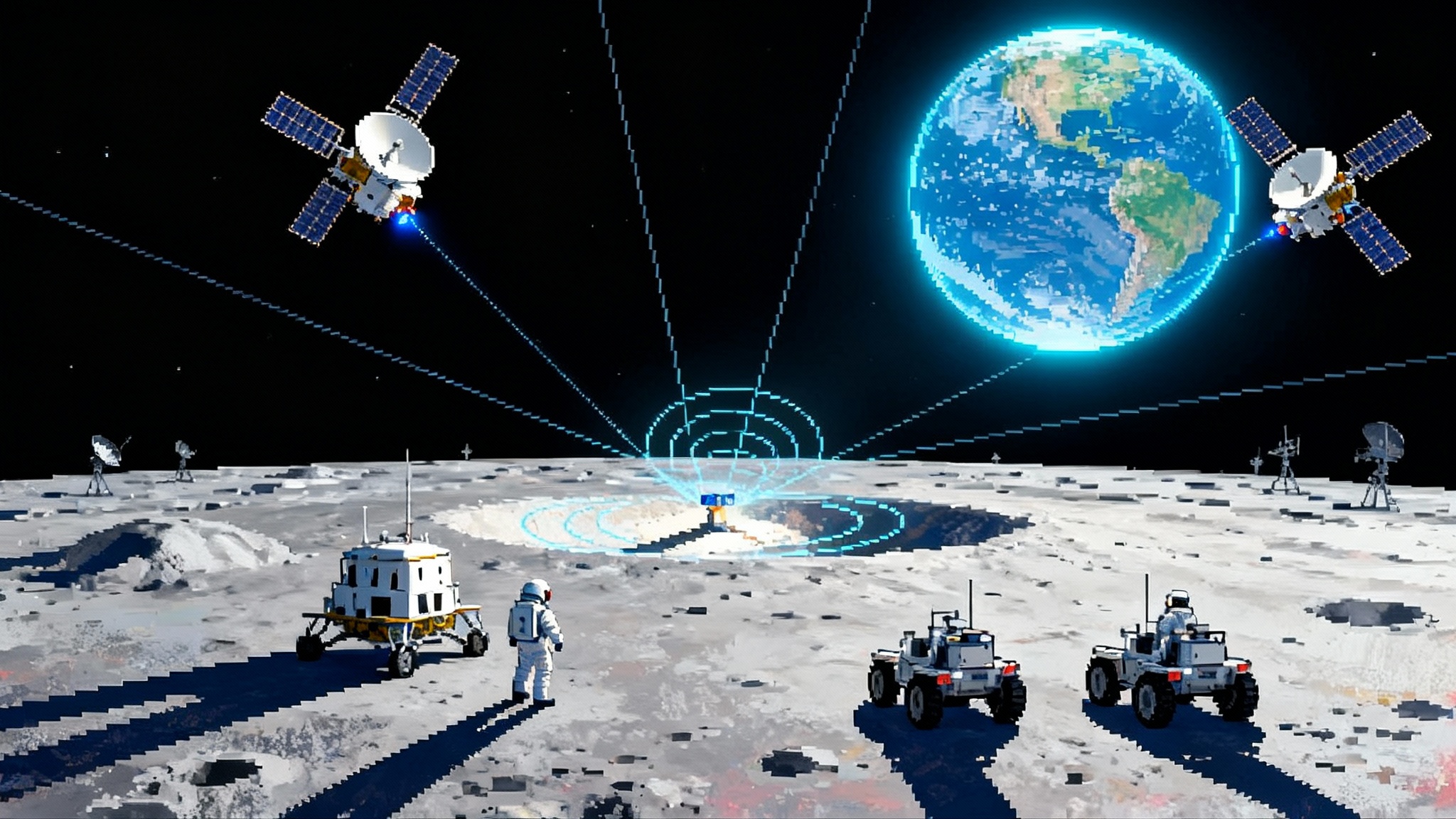Tianwen‑2’s two‑stop gamble: a mini‑moon and a comet
China’s Tianwen-2 aims to grab samples from Earth’s quasi-satellite Kamoʻoalewa, return them by 2027, then pivot to a main-belt comet. Here is why the two-target sprint could reshape planetary science, resources, and defense.
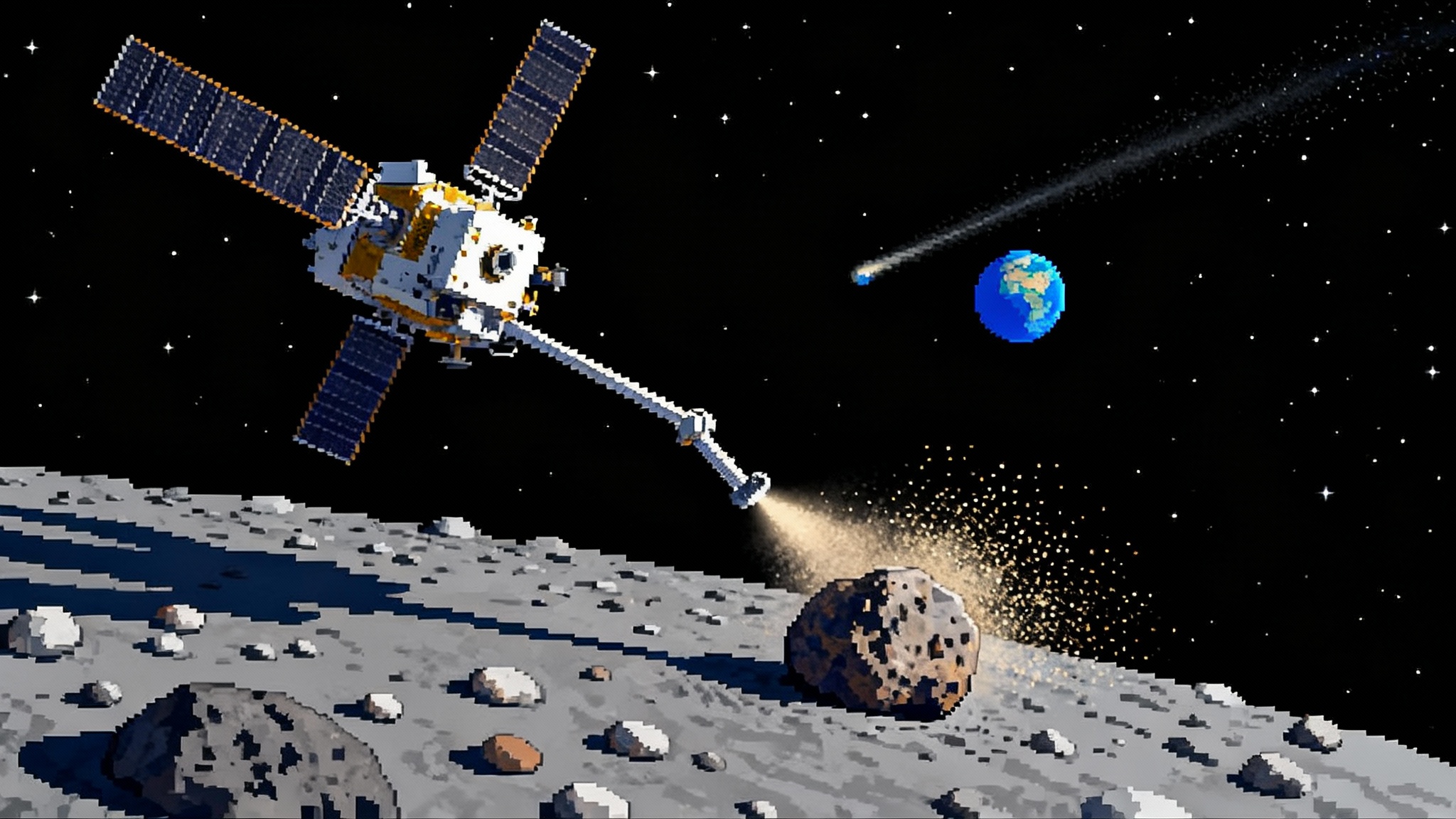
The audacity of a two-stop mission
Mark your calendar. In May 2025, China plans to send Tianwen-2 on a flight plan that reads like a dare: grab rocks from one of Earth’s closest companions, then pivot outward to chase a comet in the main asteroid belt. If the timelines hold, the spacecraft will rendezvous with the near-Earth object Kamoʻoalewa in 2026 and return samples to Earth in 2027, with the comet leg unfolding soon after. This is not just another small-body visit. It is a fast, two-target campaign designed to answer big questions about how our Solar System evolved and how we should protect our planet. As deep-space operations accelerate, complementary infrastructure like the Moon’s navigation grid plans will shape how quickly crews and robots can follow.
Think of Tianwen-2 as a long-haul researcher with a sprinting start. Before the decade closes, it could turn around lab-ready material from a near-Earth object and then carry on to interrogate a main-belt comet. That pace changes what space missions can do for science, resource planning, and planetary defense.
Why two targets change the game
Space missions usually focus on one body. A second target means added propellant, navigation complexity, and risk. The payoff is synthesis. By sampling a quasi-satellite of Earth and then flying through the dust environment of an active small body, Tianwen-2 can reveal how surface rock strength, internal structure, and volatile content vary across objects that formed in different neighborhoods of the Solar System.
The result is a side-by-side study rather than a scattered literature. In medicine, a clinical trial with matched cohorts can uncover causes that single case studies miss. Tianwen-2 applies the same logic to planetary science, but in spaceflight form.
The key milestones to watch
- May 2025: Planned launch window. Expect several trajectory correction maneuvers in the weeks that follow.
- 2026: Approach and rendezvous with Kamoʻoalewa. Imaging, mapping, and rehearsal passes precede sampling.
- 2026 to early 2027: Touch-and-grab sampling events and departure. The return capsule is prepared for Earth entry.
- 2027: Earth sample return. Recovery teams race to deliver the capsule to a clean room for preliminary examination.
- After 2027: Cruise toward main-belt comet 311P, with a close encounter and dust studies to follow.
The exact months will depend on launch day and the health of the spacecraft, but the short Earth return leg is built into the choice of Kamoʻoalewa.
Meet Kamoʻoalewa, Earth’s miniature companion
Kamoʻoalewa is a quasi-satellite, a small object that orbits the Sun while doing a slow dance around Earth. Picture a runner on the inside lane of a track who seems to hover beside you as you jog the outer lane. The runner is not tied to you, yet their path keeps them nearby. That is Kamoʻoalewa, a few dozen meters across, faint, and always difficult to study from Earth.
Why sample it? Two reasons stand out.
First, telescopic spectra suggest that its surface looks more like lunar material than like the silicate-rich rubble of typical near-Earth asteroids. Its reflectance has the muted, space-weathered signature we associate with the Moon’s basaltic lavas and crystalline minerals such as pyroxene and olivine. If Kamoʻoalewa is a shard of the Moon thrown into a heliocentric orbit by an ancient impact, holding a piece in hand would give scientists an unprecedented data point in the story of Earth-Moon exchange.
Second, Kamoʻoalewa’s orbit makes a fast sample return practical. Because it lingers near Earth, the energy cost to go there and back is modest compared with a round trip to a more distant asteroid. That is how one mission can bring specimens home by 2027 and still have fuel and time to head outward to a comet.
How the team will try to catch a pebble in space
Touching a tiny, spinning body is like docking with a boulder in microgravity. Tianwen-2 plans a familiar but still delicate choreography:
-
Reconnaissance. Weeks of close approach imaging and laser ranging build a high-resolution shape model. This 3D map guides navigation and identifies safe sampling zones.
-
Rehearsal passes. The spacecraft flies low over the surface to validate tracking, terrain relative navigation, and plume or dust behavior. Engineers check for hazards such as loose boulders or fast rotation.
-
Sampling. A short contact using a specialized end effector aims to capture regolith and small pebbles. The sampler must bite without pushing the spacecraft away, which is a real risk in gravity measured in micro-g.
-
Stow and seal. The sample container is closed inside an Earth return capsule. Contamination control is central. Every gasket and purge line is designed to keep Earth air out and preserve volatile signatures.
-
Departure and return. A precise burn sets up an Earth reentry in 2027. On landing, the capsule goes straight to a clean facility for initial mass, particle size, and mineral spectroscopy measurements.
The tempo matters. The sooner the capsule is opened, the sooner the first chemical and isotopic measurements can appear in journals, and the faster models of asteroid origins and mechanical properties can be checked.
Why Kamoʻoalewa might be lunar debris
The lunar-ejecta hypothesis rests on three independent threads that a returned sample can confirm or overturn:
-
Spectral match. Lunar mare basalts have diagnostic absorption bands due to iron-bearing silicates. Kamoʻoalewa’s faint spectrum appears to echo that pattern. A physical sample allows high-precision mineralogy and the ability to separate mature, space-weathered grains from fresher fragments.
-
Impact dynamics. The Moon has been peppered by large impacts for billions of years. Simulations show that some fragments can escape the Moon’s gravity, slip outside Earth’s Hill sphere, and evolve into quasi-satellite orbits. Surface exposure ages, microcrater densities, and solar wind implantation profiles in the grains can check whether this path makes sense for Kamoʻoalewa.
-
Chemistry and isotopes. Oxygen isotopes, chromium isotopes, and trace element ratios act like barcodes. If Kamoʻoalewa carries a lunar barcode, the case strengthens. If not, we learn that something in the near-Earth population can masquerade as lunar material, which is equally important.
A single chip the size of a grain of rice can carry enough information to settle the debate.
Then a hard turn outward: the 311P pursuit
After the Earth return, Tianwen-2 aims at 311P, also cataloged as 311P/PANSTARRS, a curious object in the main belt between Mars and Jupiter. Unlike a classic comet that dives in from the outer Solar System, 311P orbits among asteroids but sheds dust in multiple narrow tails. This is why it is often called an active asteroid or a main-belt comet.
What creates the tails? There are two leading ideas.
-
Rotational shedding. Sunlight does more than warm rock. It can spin small bodies up through a subtle torque called the Yarkovsky O’Keefe Radzievskii Paddack effect, often shortened to the YORP effect. If an object spins fast enough, weakly bound surface material can drift away, forming tails.
-
Patchy sublimation. Buried ice can survive for long periods inside some main-belt objects. Seasonal heating can expose pockets of ice that sublimate, lofting dust.
Tianwen-2 can measure the dust environment up close, characterize particle sizes, and image faint jets or landslides. Even without landing, that flyby could tell us whether 311P’s activity is dominated by spin-induced avalanches, by volatile release, or by a mix of both.
What this could reveal about water delivery and small-body evolution
The question is ancient: how did Earth get its water and organics? If 311P shows signatures of preserved ice or hydrated minerals, it would support the idea that the inner Solar System was fed by small delivery trucks rather than a single tanker. Different main-belt bodies may have stored different fractions of ice and organics, depending on where and when they formed. A detailed profile of 311P’s dust grains and volatiles would help pin down the thermal history of the belt.
Equally important is the mechanics. If 311P is losing mass through rotational shedding, we get a live experiment in how small bodies age. Over millions of years, repeated shedding can reshape an object, round off sharp edges, or expose bedrock. By linking dust properties to surface geology, Tianwen-2 can turn a distant tail into a timeline.
Why the fast cadence matters for planetary defense
Planetary defense is a chain that breaks at its weakest link. Detection is improving, but we still need better data on what small bodies are made of and how they respond to force. A rubble pile bound by vanishingly small cohesion behaves very differently from a monolithic shard. Survey upgrades like Rubin’s real-time sky firehose improve discovery and tracking, but we also need physical samples to ground truth models.
Tianwen-2’s Kamoʻoalewa sample could answer three practical questions quickly:
-
What is the grain size distribution near the surface of a quasi-satellite that has lived close to the Sun and Earth for a long time? This affects how momentum transfers if we push it.
-
How strong are the grain-to-grain bonds and the porosity of the regolith? That strength sets the threshold between cratering and bulk motion when an impactor hits.
-
What are the dominant minerals and any trace volatiles? This composition influences thermal properties, which in turn set how sunlight changes spin and orbit over time.
Answering these within months of a 2027 return would let modelers update impact simulations, anchoring them in ground truth rather than best guesses. It would also complement ongoing international efforts. NASA’s kinetic impact experiment showed that momentum transfer can be amplified by ejecta, and Europe’s follow-up spacecraft will refine that measurement by mapping the crater and the binary system’s properties. Tianwen-2 adds the missing piece: precise material science from a real near-Earth object.
The in-space resources angle
Space resource planning is not about rushing to mine. It is about reducing uncertainty. Handling regolith is expensive and risky, and the cost scales with surprises. A clean set of measurements from Kamoʻoalewa tells engineers what a capture mechanism needs to tolerate, how abrasive the dust is, and whether thermal cycling destroys seals and gaskets. If the sample shows unusual brittleness or cohesion, that flows straight into hopper design, drill bit choice, and dust mitigation systems for future missions.
The 311P leg adds a volatile inventory check. If active asteroids in the main belt hold accessible water bound in minerals or as ice in shaded pockets, they become stepping stones for deep space logistics. Even a few percent by mass would be game changing if found in objects that are dynamically reachable.
The exploration race, in sharper relief
China’s approach is speed plus synthesis. Return a near-Earth object sample by 2027, then chase a main-belt comet, and fold both results into a single narrative about origin and risk. That strategy will land alongside a crowded calendar. The United States and Japan have already returned asteroid samples, and Europe is deep into characterization of a deflected asteroid system. Meanwhile, NASA’s commercial lunar program is maturing as commercial lunar landers turn the corner. Tianwen-2’s rapid cadence and dual focus introduce a different competitive pressure: it can change consensus quickly.
Scientific consensus moves when independent teams using different methods converge on the same answer. A Chinese sample measured in a Chinese lab, and then replicated by international teams through shared splits or cross-checked techniques, can accelerate that convergence. Policy makers notice. If the first results in late 2027 show, for example, that near-Earth rubble piles are weaker than assumed, defense agencies can revise playbooks before the 2030s. If 311P looks ice rich, space agencies can prioritize missions to similar objects and businesses can model propellant depots accordingly.
The geopolitical layer is undeniable. Data and samples are diplomatic currency. The nation that provides the fastest, cleanest evidence often sets the terms of debate. Tianwen-2 therefore matters not only for what it discovers, but for how quickly it can make those discoveries legible to the world.
Risks to watch with eyes wide open
-
Navigation and small-body spin. A tiny target with changing illumination is hard to track. Terrain relative navigation must work flawlessly, or sampling attempts will wave off.
-
Surface surprises. If Kamoʻoalewa’s surface is crusted over, excessively soft, or electrically charged in an unexpected way, the sampler could clog or fail to grip.
-
Contamination and curation. The most decisive measurements use light elements and volatile signatures that are easy to disturb. Capsule integrity, rapid field handling, and clean lab protocols are critical to credibility.
-
Cruise discipline. After the fanfare of a 2027 Earth return, teams must keep a deep space craft healthy for years. Long-duration power and thermal stability are quiet but essential successes.
These are solvable, but they are not small. They are the price of doing fast science in deep space.
How to follow the story like a pro
-
Look for the first high-phase-angle images in 2026. They reveal surface texture and boulder distributions that hint at cohesion and landslide history.
-
Watch for a pre-landing rehearsal report. The number of wave-offs before the sample attempt is a good proxy for navigation margin.
-
On sample return day in 2027, the first official mass and grain size distribution will likely arrive within days. The first mineralogy and isotopes will take longer, but an initial description often appears within weeks.
-
When the comet leg begins, pay attention to dust size distributions and any periodicity in dust release. Periodicity suggests rotation effects. Irregular bursts suggest patchy sublimation.
The bottom line
Two targets, one spacecraft, a tight clock. Tianwen-2’s plan looks risky until you consider the upside. A near-Earth sample on lab benches by 2027 shrinks the distance between discovery and decision. A follow-on encounter with an active body in the main belt adds the missing evolutionary context. Together, those data sets could harden planetary defense models, sharpen designs for in-space resource systems, and shift the competitive rhythm among the United States, China, and Europe from prestige to proof.
If the mission sticks its landings, literal and metaphorical, 2027 could feel like a hinge in planetary science. Not because one team found a shiny rock, but because a fast loop from space to lab to policy became normal. That is the real gamble. If it pays off, the field will not go back.

